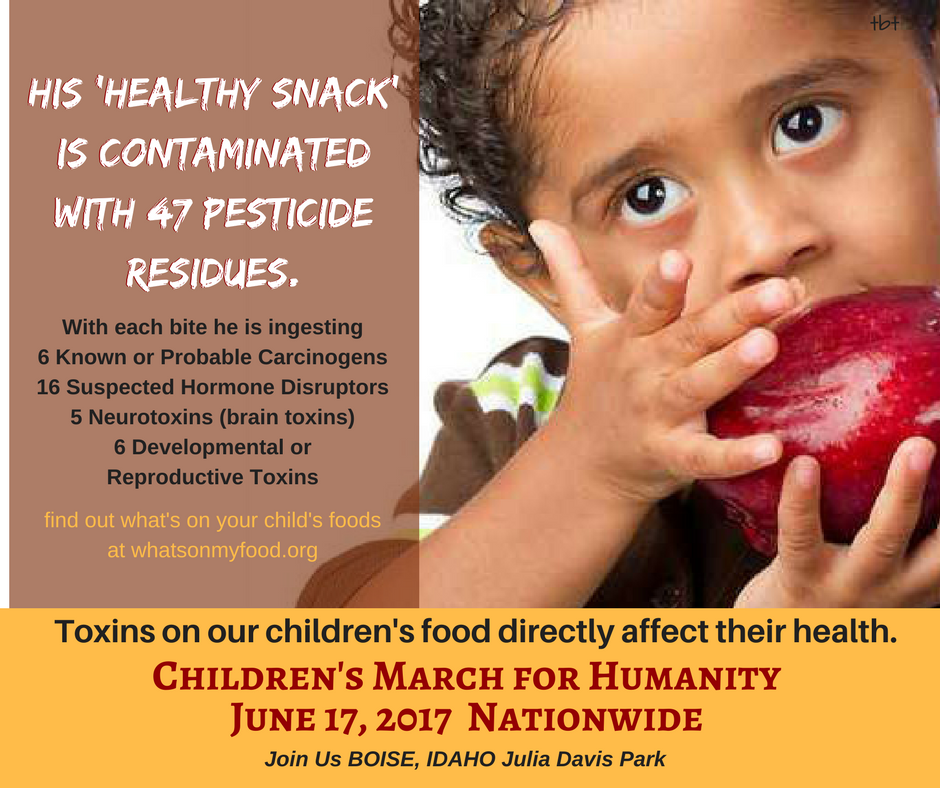3 Pesticide Realities


Myths about pesticides are a testimony to the power of advertising, marketing and lobbying. Pesticide corporations, like big tobacco and the oil industry, have systematically manufactured doubt about the science behind pesticides, and fostered the myth that their products are essential to life as we know it — and harmless if “used as directed.”
The book Merchants of Doubt calls it the Tobacco Strategy: orchestrated PR and legal campaigns to deny the evidence, often using rogue scientists to invent controversy around so-called “junk science” to deny everything — from second-hand smoke causing cancer to global warming to the hazards of DDT.
Here are eight of the seemingly plausible myths we hear from the Big 6 every day:
- Pesticides are necessary to the feed the world
- Pesticides aren’t that dangerous
- The dose makes the poison
- The government is protecting us
- GMOs reduce reliance on pesticides
- We’re weaning ourselves off of pesticides
- Pesticides are the answer to global climate change
- We need DDT to end malaria, combat bedbugs, etc.
Myth #1: “Pesticides are necessary to the feed the world”
Reality: The most comprehensive analysis of world agriculture to date tells us that what can feed the world — and what feeds most of the world now, in fact — is small-scale agriculture that does not rely on pesticides.
Dow, Monsanto, Syngenta and other pesticide producers have marketed their products as necessary to feed the world. Yet as insecticide use increased in the U.S. by a factor of 10 in the 50 years following World War II, crop losses almost doubled. Corn is illustrative: in place of crop rotations, most acreage was planted year after year only with corn. Despite more than a 1,000-fold increase in use of organophosphate insecticides, crop losses to insects has risen from 3.5% to 12% (D. Pimental and M. Pimental, 2008).
More to the point, hunger in an age of plenty isn’t a problem of production (or yields, as the pesticide industry claims), efficiency or even distribution. It is a matter of priorities. If we were serious about feeding people, we wouldn’t grow enough extra grain to feed 1/3 of the world’s hungry — and then pour it into gas tanks.
Myth #2: “Pesticides aren’t that dangerous”
Reality: Pesticides are dangerous by design. They are engineered to cause death. And harms to human health are very well documented, with children especially at risk. Here are a few recent examples from the news:
- An entire class of pesticides (organophosphates) has been linked to higher rates of ADHD in children.
- The herbicide atrazine, found in 94% of our water supply, has been linked to birth defects, infertility and cancer.
- Women exposed to the pesticide endosulfan during pregnancy are more likely to have autistic children.
- Girls exposed to DDT before puberty are five times more likely to develop breast cancer.
- The World Health Organization recently designated the key ingredient in the widely used herbicide RoundUp a “probable human carcinogen.”
A large and growing body of peer-reviewed, scientific studies document that pesticides are harmful to human health. The environmental damage caused by pesticides is also clear; from male frogs becoming females after exposure, to collapsing populations of bats and honeybees.
Myth #3: “The dose makes the poison”

Reality: If someone is exposed to an extremely small amount of one ingredient from a single pesticide at a time, and it was a chemical of relatively low toxicity and exposure occurred outside any window of biological vulnerability, it might pose little danger. Unfortunately, that’s an unlikely scenario.
First, pesticide products typically contain several potentially dangerous ingredients (including so-called “inerts” not listed on the label). Second, we’re all exposed to a cocktail of pesticides in our air, water, food and on the surfaces we touch. The combination of these chemicals can be more toxic than any one of them acting alone. Third, many pesticides are endocrine disruptors — and even extremely low doses can interfere with the delicate human hormone system and cause lifechanging damage.
Finally, the timing of exposure can be just as — if not more — important than the dose. Even extremely low levels of pesticides can cause irreversible, lifechanging harm if they occur at a moment when organs or other systems are developing. One stark example from a recent study using MRI technology illustrates the point: children exposed in utero to the neurotoxic insecticide chlorpyrifos experienced lasting changes in their brain architecture.
It’s also important to understand that research used to determine the safety of a pesticide is funded and conducted by the corporations marketing the product, often leading to distortion of findings.




